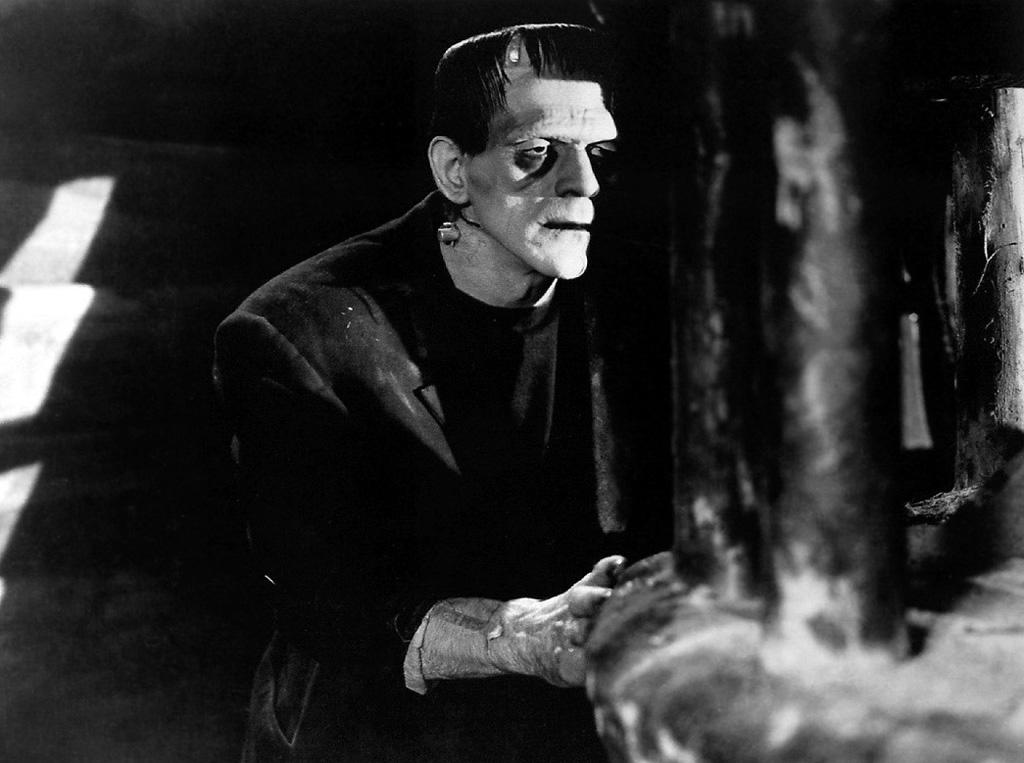
There are reasons why this amazing work of fiction is still found on GCSE papers so long after it was initially published. One of the reasons is the incredible use of language.
Mary Shelley's "Frankenstein" has a gripping yet dark narrative but it is also known for its rich and intricate use of language. In this guide, we will delve into the multifaceted layers of Shelley's language, examining its thematic significance, the employment of motifs, and the incorporation of allusions. Through careful analysis, we will unravel the complexities of Shelley's linguistic style and the use of literary techniques, offering insights into the novel's deeper meanings and relevance.

Literary Techniques in Frankenstein
The language used in Frankenstein serves as a tool for conveying themes, character development, and emotional resonance. Shelley employs a diverse array of linguistic techniques to evoke specific moods and provoke thought in the reader. From vivid imagery to poignant symbolism, every word is meticulously chosen to immerse the audience in the haunting world of Victor Frankenstein and his creation.
Shelley uses techniques such as simile and metaphor within her writing to make her points to the reader:
“The saintly soul of Elizabeth shone like a shrine-dedicated lamp in our peaceful home.”
This kind of figurative language helps to create a more in-depth picture of what is happening in the novel. In this case, Elizabeth is being put on a pedestal as an example of a perfect soul, and an idealised character.
Other tools that are used in the writing include pathetic fallacy, such as when the author explains that “roarings like thunder were heard at a distance.”
Pathetic fallacy is a literary device wherein nature or inanimate objects are attributed with human emotions or characteristics, often to reflect or enhance the mood or tone of a scene.
Metaphor is also used throughout the book, and some of the uses of metaphor could potentially be up for debate. People have often debated whether certain themes serve as metaphors, such as the use of creationism within the book. Is Shelley trying to make a point about religion and creationism by having Frankenstein create his “Creature”?
Noting the use of these tools and showing examples will help to show your understanding of the book. Go through a few chapters of the book and make notes on things like similes you come across, as well as metaphors, and the use of descriptive language.
Motifs
Not every book that you may study in the GCSE curriculum will feature motifs, but Frankenstein certainly does, and for the top grades in your English GCSE, you should look to point out these motifs and themes.
Motifs are recurring elements or patterns that serve to underscore key themes and ideas throughout the text. In "Frankenstein," several motifs emerge, contributing to the novel's thematic richness and cohesion.
Light and Darkness
“Darkness had no effect upon my fancy, and a churchyard was to me merely the receptacle of bodies deprived of life, which, from being the seat of beauty and strength, had become food for the worm.”
Throughout the novel, light and darkness serve as powerful symbols, representing knowledge and ignorance, enlightenment and despair.
Victor frequently describes his scientific pursuits as a quest for light, symbolising his desire to uncover the mysteries of life. Conversely, the Creature is often associated with darkness, reflecting his isolation and inner turmoil. For example, Victor's laboratory, where he brings the Creature to life, is described as a "dreary night of November," heightening the eerie atmosphere and foreshadowing the tragic consequences of his actions.
Already in this guide we’ve seen an example of light being used as a motif, when the narrator says that Elizabeth “shone like a shrine-dedicated lamp in our peaceful home.”
Nature
Nature emerges as a recurring motif in "Frankenstein," embodying both beauty and terror. Shelley's vivid descriptions of the natural world evoke a sense of awe and wonder, serving as a stark contrast to the artificiality of Victor's scientific experiments.
The exploration of the Arctic provides a backdrop for the characters' inner turmoil, highlighting the timeless power of the natural world to inspire both awe and fear. For example, Victor finds solace in the beauty of nature during his moments of despair, reflecting the restorative power of the natural world amidst the chaos of human ambition.
Doppelgangers
A doppelganger is a concept often found in literature and folklore, referring to a mysterious or ghostly double or counterpart of a living person. This double is typically identical in appearance to the individual it mirrors, but may represent an alter ego or a distorted reflection of the self. The presence of a doppelganger can symbolize themes of identity, duality, and fate, suggesting a deeper connection between the characters involved.
The theme of doppelgangers, or doubles, permeates "Frankenstein," underscoring the interconnectedness of Victor and the Creature. Victor's creation of the Creature establishes a profound bond between them, blurring the lines between creator and creation. The doppelganger motif highlights the ethical and moral implications of Victor's actions, as well as the inherent duality of human nature.
Allusions
An allusion is a literary device where an author refers to a well-known person, event, place, or work of art, whether explicitly or implicitly, within their own work.
Allusions are often used to enrich the meaning of a text, evoke specific cultural or historical contexts, or establish connections between different pieces of literature.
Frankenstein has allusions within from the author, enriching the narrative with references to literary, philosophical, and cultural texts. These allusions invite readers to draw connections between Shelley's work and the work of others, as well as other tales and myths.
Paradise Lost
John Milton's epic poem "Paradise Lost” is one such allusion.
"Paradise Lost" is an epic poem written by the English poet John Milton and first published in 1667. It retells the biblical story of the Fall of Man, focusing on the events leading up to Adam and Eve's expulsion from the Garden of Eden. Milton's work explores themes of rebellion, temptation, and the nature of good and evil.
Shelley draws upon Milton's portrayal of Satan as a sympathetic figure, cast out of heaven for his rebellion against God, to inform the characterization of the Creature. Like Satan, the Creature is depicted as a tragic figure, rejected by his creator and thrust into a hostile world. By invoking "Paradise Lost," Shelley invites readers to reconsider the moral complexities of Victor and the Creature's relationship, challenging traditional notions of good and evil.
Prometheus
The Prometheus myth is another example, which Shelley explicitly references in the subtitle of the novel: "The Modern Prometheus."
In Greek mythology, Prometheus defies the gods by stealing fire and giving it to humanity, symbolising the quest for knowledge and the pursuit of enlightenment. Victor's ambition to create life mirrors Prometheus's defiance, leading to tragic consequences for both himself and humanity. By alluding to the Prometheus myth, Shelley furthers the moral and ethical dilemmas inherent in Victor's actions, as well as the timeless quest for knowledge and power.
A Fascinating Study in Language Use
Frankenstein’s language is fascinating, and the choices of Shelley to masterfully weave in motifs and allusions to other seminal works help to turn this into a fascinating novel to explore and explain. Ensure that you are prepared by doing your research and having some quotes up your sleeve to use in your GCSE work, and show examiners that you have a thorough understanding of what Shelley was trying to achieve.













